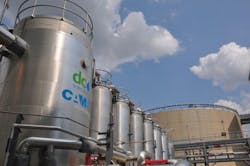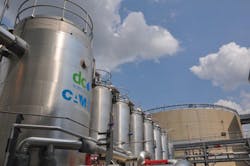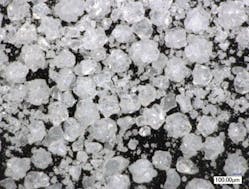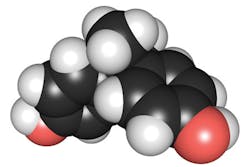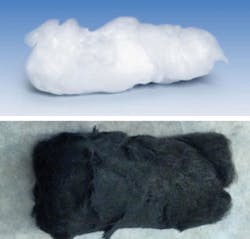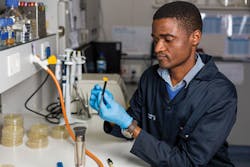Novel uses for wastewater illustrate its value, change perceptions
Wastewater treatment technologies, waste-to-energy systems, and wastewater nutrient recovery plants are changing the definition of what has been traditionally considered “dirty work.” With areas across the United States facing drought and water scarcity becoming a real concern for communities all over the world, plant managers, municipalities and utilities are beginning to think differently about wastewater.
For instance, biosolids can be turned into fertilizer for crops or an energy source for the treatment plant itself, and wastewater can be transformed into high-quality drinking water. Scientists have also been studying wastewater to learn more about the communities it comes from and to improve public health. Today, there is little that wastewater can’t do. The problem: changing public perception of this valuable liquid gold. Here are just a few of the innovative ways this former byproduct is opening people’s minds to its possibilities.
(Bio)Solid Benefits
Several municipalities and utility companies (both public and private) have begun to turn waste streams into revenue streams. For example, DC Water estimates it will need about $1 billion in pipe repairs in the coming years. By treating the biosolids and sludge produced during its wastewater treatment process, the agency was able to create an all-natural fertilizer that is currently being sold to area garden centers. All proceeds from the sale of the fertilizer, called Bloom, are being used to fund the much-needed infrastructure improvements.
“So many of the innovations and creative aspects of what we are doing here at DC Water come from the same basic challenge, which is enormous need for revenue,” said DC Water CEO George Hawkins, noting the increased costs associated with regulatory compliance and infrastructure maintenance as some of the main drivers of innovation at DC Water.
Sustainability is about a whole lot more than "going green." It's about creating reliable, consistent infrastructure that can be managed, maintained and upgraded well into the future.
At the Blue Plains Advanced Wastewater Treatment facility, a research and development team is continually looking for new ways to achieve nutrient removal “better, faster and cheaper,” Hawkins said. “[With Bloom soil,] we already had 1,200 wet tons of biosolids every day, but the question was what to do with it and how to turn it into a resource. We had huge expenses and money invested already [to handle these biosolids] and were able to draw upon that to make a return on investment calculation.”
DC Water’s Blue Plains facility consists of a dewatering building, 32 thermal hydrolysis vessels, four 80-foot-tall concrete digesters and three turbines. The agency’s innovative approach to “finding news ways to work with what we’ve got,” Hawkins said, earned them the 2016 US Water Prize. From the awards: “Innovation is key to creating a one water future ... DC Water’s Resource Recovery Program - the first of its kind in North America and the largest in the world - has captured attention around the globe by producing a net 10 megawatts of electricity from the wastewater treatment process.”
In fact, DC Water is the largest generator of clean energy in the Washington, D.C., area. Future plans to sell this “sewer energy” to local businesses are in the works. DC Water’s success story has prompted innovation in other parts of the U.S. as well.
The Charles River Watershed Association (CRWA), an organization dedicated to protecting the Charles River in Massachusetts, is currently supporting a new approach to treating wastewater in the area through Community Water and Energy Resource Centers (CWERC). The plan calls for “a network of small, decentralized, local wastewater treatment facilities” that would treat sewage to produce clean water and fertilizer, according to a report issued by the Association. Like DC Water’s plan, the CRWA says “thermal energy given off during the process could also be captured and used locally to heat buildings.” CRWA is working with local utilities to implement these resource centers.
In a recent town hall meeting, the city of Littleton, Mass., which serves 2,800 customers, approved $450,000 for the planning and design of a CWERC treatment plant of its own. Officials hope to have the system up and running in the next few years, saving money on hauling, equipment, and electricity costs in the process.
Chemical-Specific Treatment
Several cutting-edge treatment options for capturing and treating specific chemicals in wastewater have emerged recently. One such example is a closed-loop system for recovering ammonia from wastewater, developed at NASA’s Kennedy Space Center. The Ammonia Recovery System for Wastewater was developed for use on the International Space Station, according to a press release from NASA. The system uses media that is highly selective for ammonia, with results reducing the ammonia concentrations in wastewater from 100,000 ppm to less than 1 ppm. The media can be reused over and over again, and ammonia is captured as a byproduct of the process. Though the technology is currently being used in smaller scale operations, it is capable of being used for larger municipal wastewater treatment needs.
At Carnegie Mellon University, chemist Terrence J. Collins has developed an approach that removes more than 99 percent of bisphenol A (BPA) from water. BPA is used in the manufacturing of plastics, and is currently found in water sources around the world. The chemical is oftentimes still present in water coming into wastewater treatment plants, even after initial screening and treatment processes.
In a paper published in Green Chemistry, Collins’ research team and collaborators at the University of Auckland and Oregon State University outlined their system for treating BPA-contaminated waters. Using a group of catalysts called TAML activators - small molecules that mimic oxidizing enzymes - combined with hydrogen peroxide, the team was able to reduce levels of BPA in water by 99 percent in 30 minutes. “The resulting water tested at near neutral pH, the norm for wastewater treatment,” the paper said.
At Rice University, researchers have used carbon nanotube-reinforced filters to clean toxins from water. The reusable filters, immobilized in a tuft of quartz fiber, have effectively removed more than 99 percent of cadmium, cobalt, copper, mercury, nickel and lead from samples. The filters are made from carbon nanotubes grown in place on quartz fibers that are then chemically epoxidized. Lab analysis of the “supported-epoxidized carbon nanotube” (SENT) filters was published in Scientific Reports. Rice chemist Andrew Barron and lead author Perry Alagappan say the metals contained after filtration could be extracted for reuse or turned into a solid for safe disposal. The research garnered Alagappan the 2015 Stockholm Junior Water Prize, and his continued work on the project shows that the filtration technology could be scaled up for use in treating mine wastewater, or other waters with high metal concentrations.
The Future: Reading Wastewater for Public Health
Wastewater may soon become a key ally in the fight against antibiotic-resistant disease and pinpointing exposures in communities across the globe.
At Stellenbosch University in South Africa, a new study found that bacteria in municipal wastewater produce antimicrobial compounds or biosurfactants. These compounds can help prevent the growth of antibiotic-resistant microorganisms. Dr. Thando Ndlovu collected wastewater samples and conducted tests on the various biosurfactant-producing bacteria found in these samples.
“The biosurfactants produced by the two bacteria in my study prevented the growth of major disease-causing bacteria such as methicillin-resistant Staphylococcus aureus and gentamicin-resistant E. coli, which can lead to life-threatening infections in humans,” Ndlovu said.
While biosurfactant-producing bacteria have been studied in contaminated soil in the past, Ndlovu said his study showed that “municipal wastewater is ideal for the isolation of diverse biosurfactant-producing bacteria.” The findings could be used to develop new antibiotic drugs in the future.
The field of sewage epidemiology, or wastewater-based epidemiology, looks at a city’s sewage to learn more about the people who live there. The National Sewage Sludge Repository at Arizona State University is home to sludge samples from more than 200 American wastewater treatment plants, representing more than 32 million people.
In an interview with Popular Science, Rolf Halden, an environmental engineer and sustainability researcher at Arizona State University, said, “When someone gets sick they shed a huge amount of bacteria or viruses. Even a few sick individuals create a signal in the sewage, and we can measure that.”
Recently, researchers were able to measure pathogens in sewage to follow the outbreak and transmission of the Zika virus. In the future, researchers hope to prevent epidemics or breakouts before they can strike - all from what we send down the drain. WW
About the Author: Alanna Maya is the Assitant Editor for WaterWorld Magazine. Email her at [email protected].
